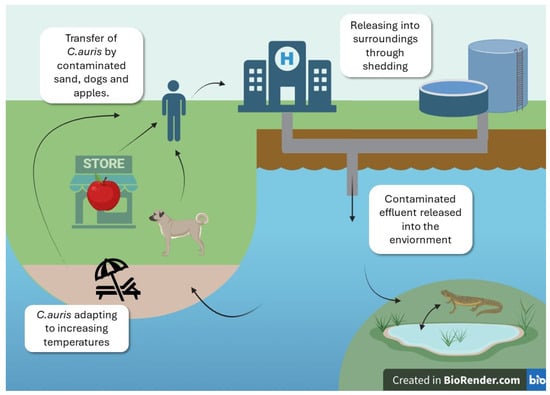Invasive Candidiasis
A topical collection in Journal of Fungi (ISSN 2309-608X). This collection belongs to the section "Fungal Pathogenesis and Disease Control".
Viewed by 1834Editor
Interests: medical microbiology; infectious diseases; invasive candidiasis; septicemia; antimicrobial resistance; biomarkers; flow cytometry; microbiological diagnostic; epidemiology; public health
Special Issues, Collections and Topics in MDPI journals
Topical Collection Information
Dear Colleagues,
Invasive Candidiasis (IC) is a major threat in hospitalized patients, especially among intensive care unit patients, and covers both deep-seated and bloodstream infections (candidemia). The mortality rate associated with IC can range from 35 to 75%, and despite the efforts and the introduction of new antifungal agents, it has not decreased in the past two decades. Colonization of the skin, and mucous membranes and the alteration or disruption of natural host barriers, like wounds, surgery, and the insertion of indwelling intravascular catheters, are the main predisposing factors for Candida infections. The difficulty in achieving a diagnosis, due to the nonspecific clinical symptoms and delayed laboratory detection methods, alongside the subsequent delay in the initiation of adequate antifungal therapy, are also a catalyst for this trend. Although C. albicans is the yeast most frequently isolated from IC patients, non-Candida albicans strains such as C. parapsilosis and especially C. glabrata are equally challenging. In recent years, C. auris has emerged as a major pathogen that must be considered of global public health importance.
The risk of death owing to IC inherently puts significant pressure on health care services, leading to increased hospital costs and a shortage of intensive care resources.
This Topic Collection highlights the importance of new diagnostic tools and antifungal drugs in managing invasive candidiasis. Original research or review papers on host–pathogen interactions and antifungal resistance are also welcome.
Dr. Sofia Costa de Oliveira
Collection Editor
Manuscript Submission Information
Manuscripts should be submitted online at www.mdpi.com by registering and logging in to this website. Once you are registered, click here to go to the submission form. Manuscripts can be submitted until the deadline. All submissions that pass pre-check are peer-reviewed. Accepted papers will be published continuously in the journal (as soon as accepted) and will be listed together on the collection website. Research articles, review articles as well as short communications are invited. For planned papers, a title and short abstract (about 100 words) can be sent to the Editorial Office for announcement on this website.
Submitted manuscripts should not have been published previously, nor be under consideration for publication elsewhere (except conference proceedings papers). All manuscripts are thoroughly refereed through a single-blind peer-review process. A guide for authors and other relevant information for submission of manuscripts is available on the Instructions for Authors page. Journal of Fungi is an international peer-reviewed open access monthly journal published by MDPI.
Please visit the Instructions for Authors page before submitting a manuscript. The Article Processing Charge (APC) for publication in this open access journal is 2600 CHF (Swiss Francs). Submitted papers should be well formatted and use good English. Authors may use MDPI's English editing service prior to publication or during author revisions.
Keywords
- antifungal drugs
- antifungal resistance
- diagnostic tools
- biofilms
- candidemia
- antifungal stewardship









